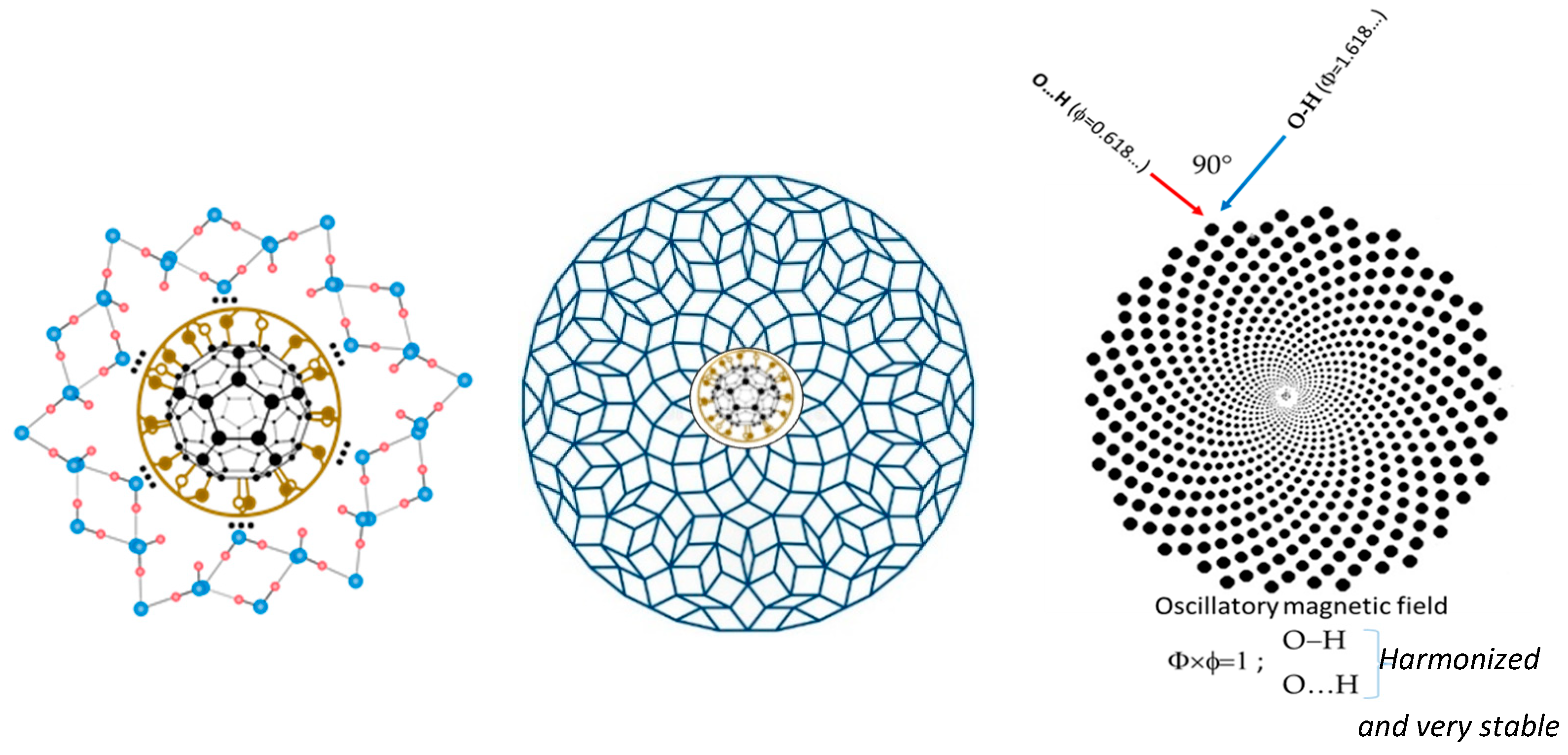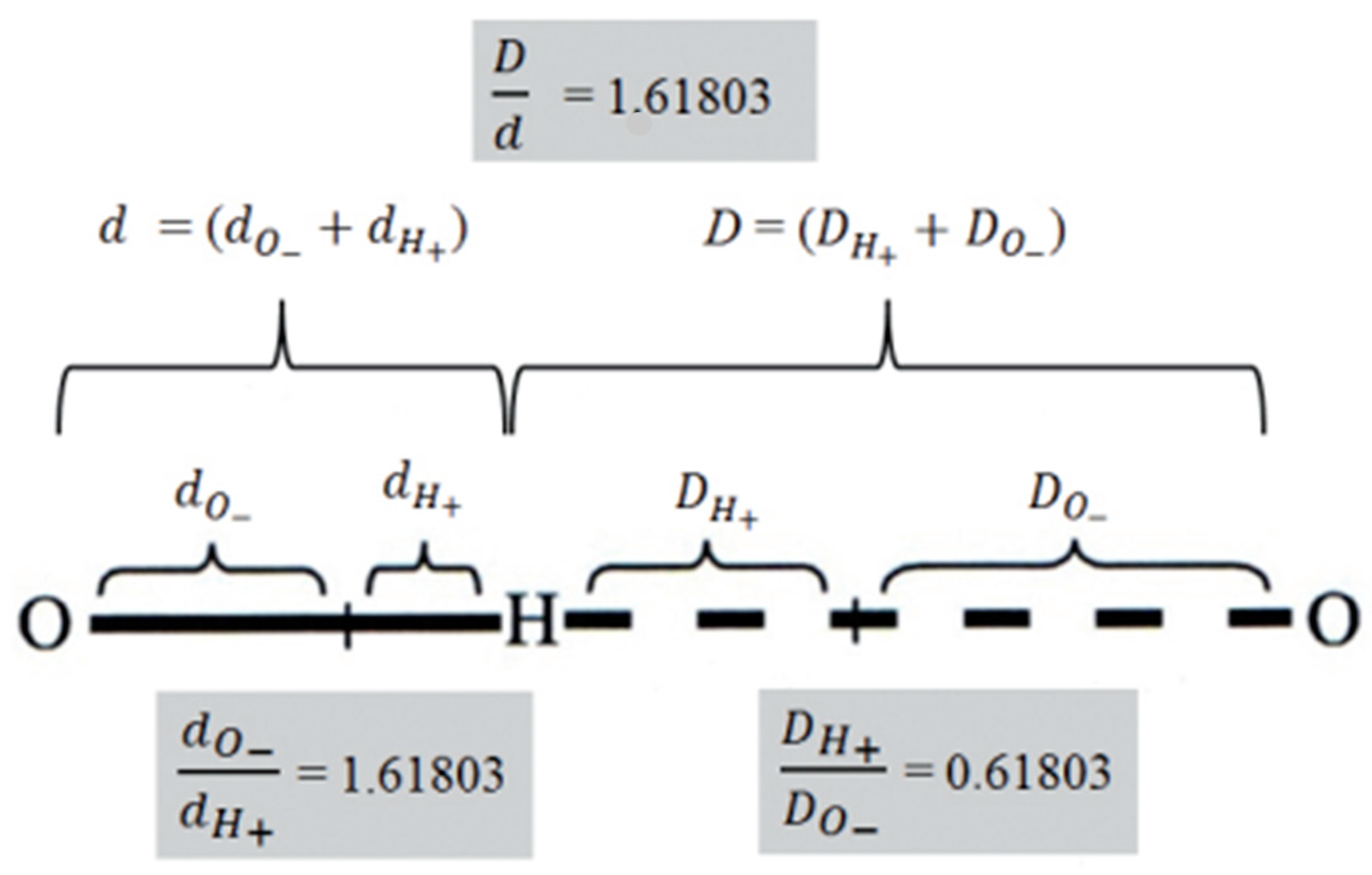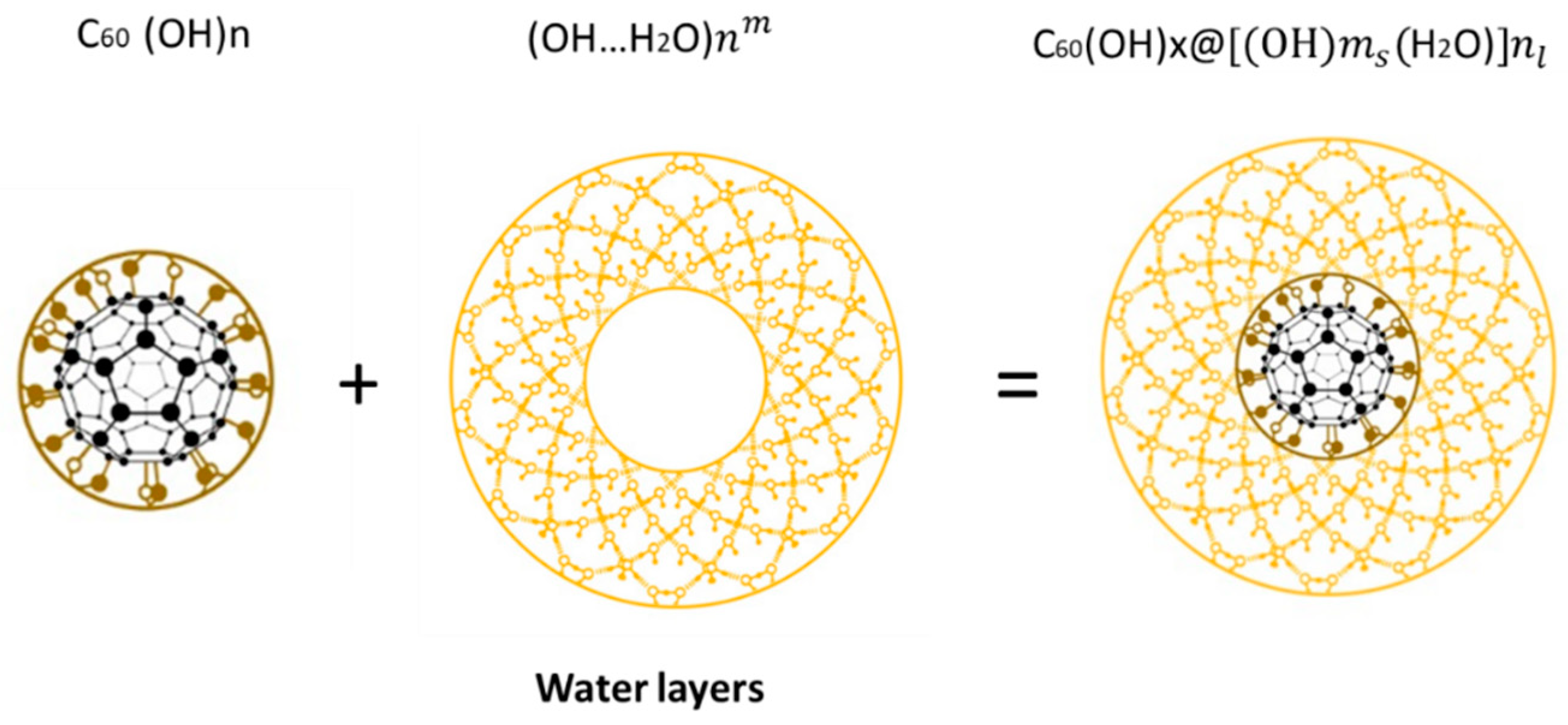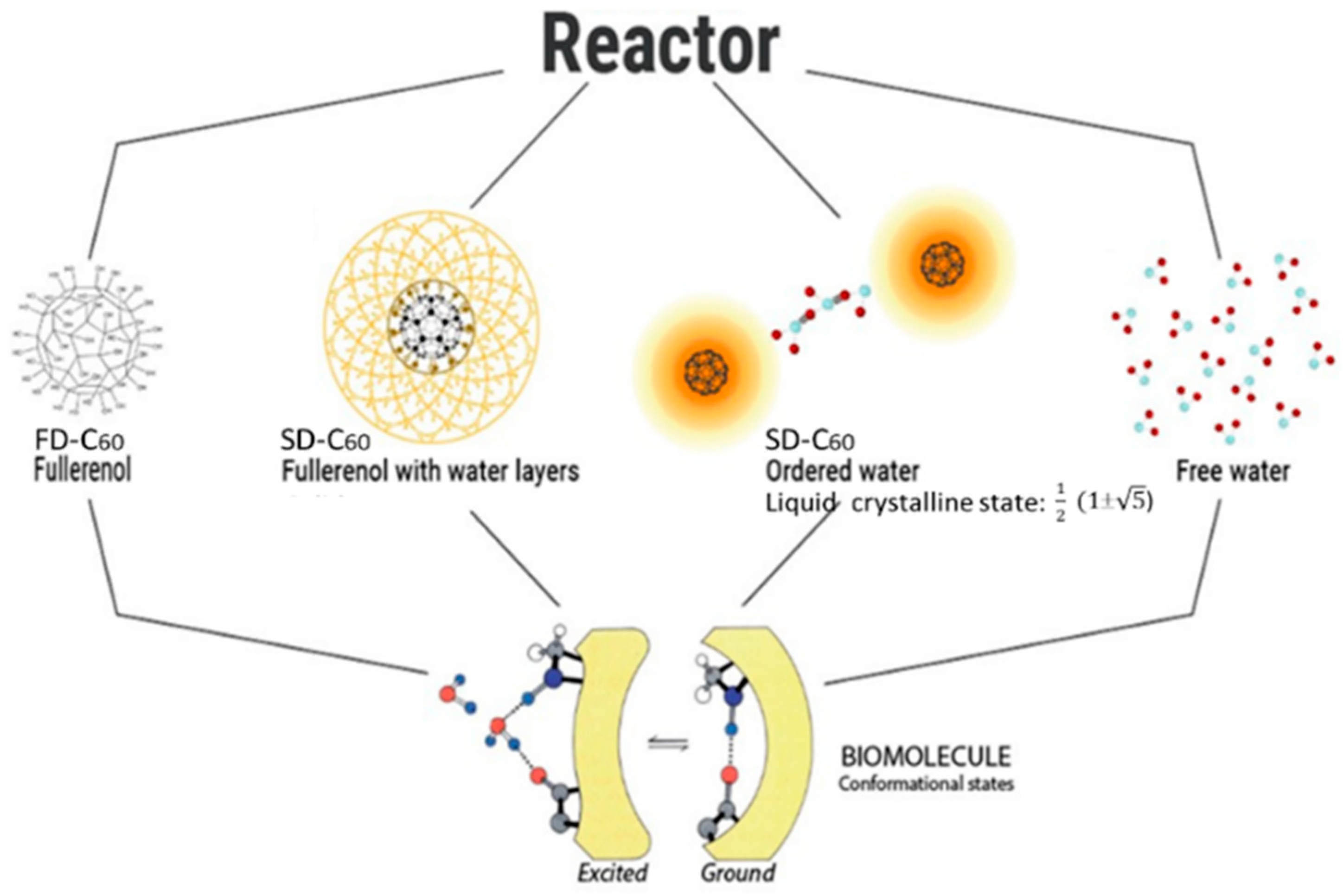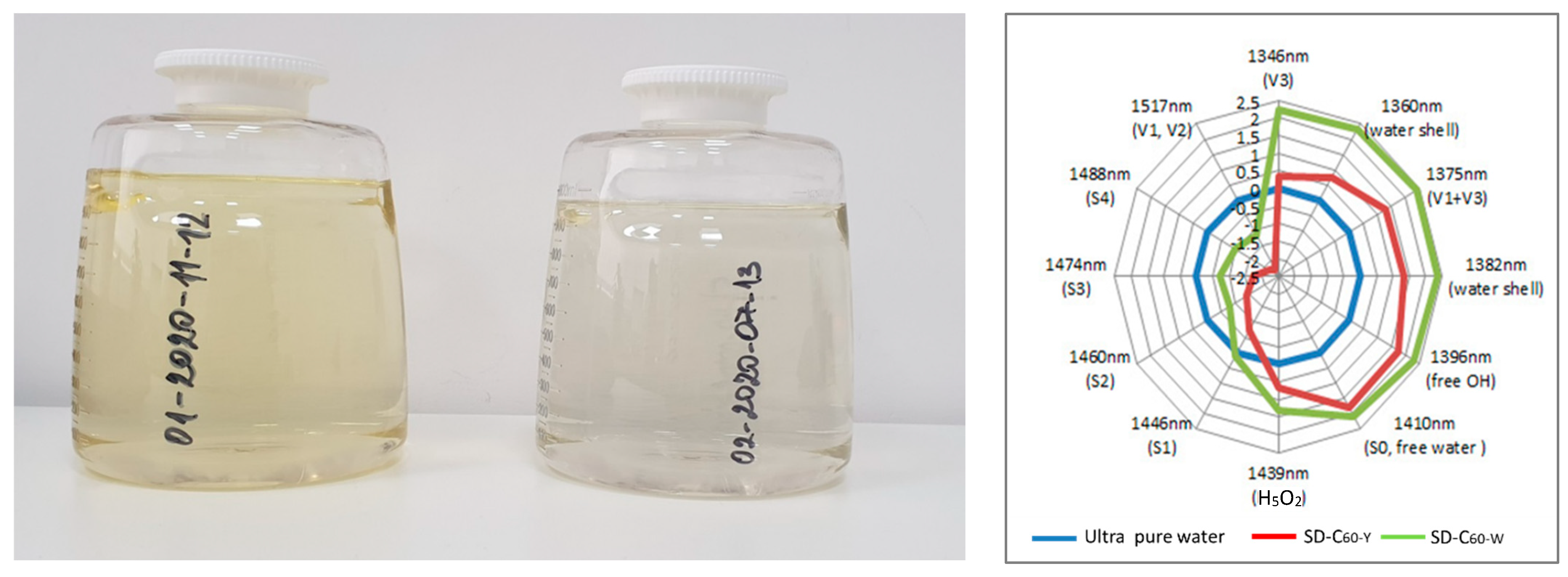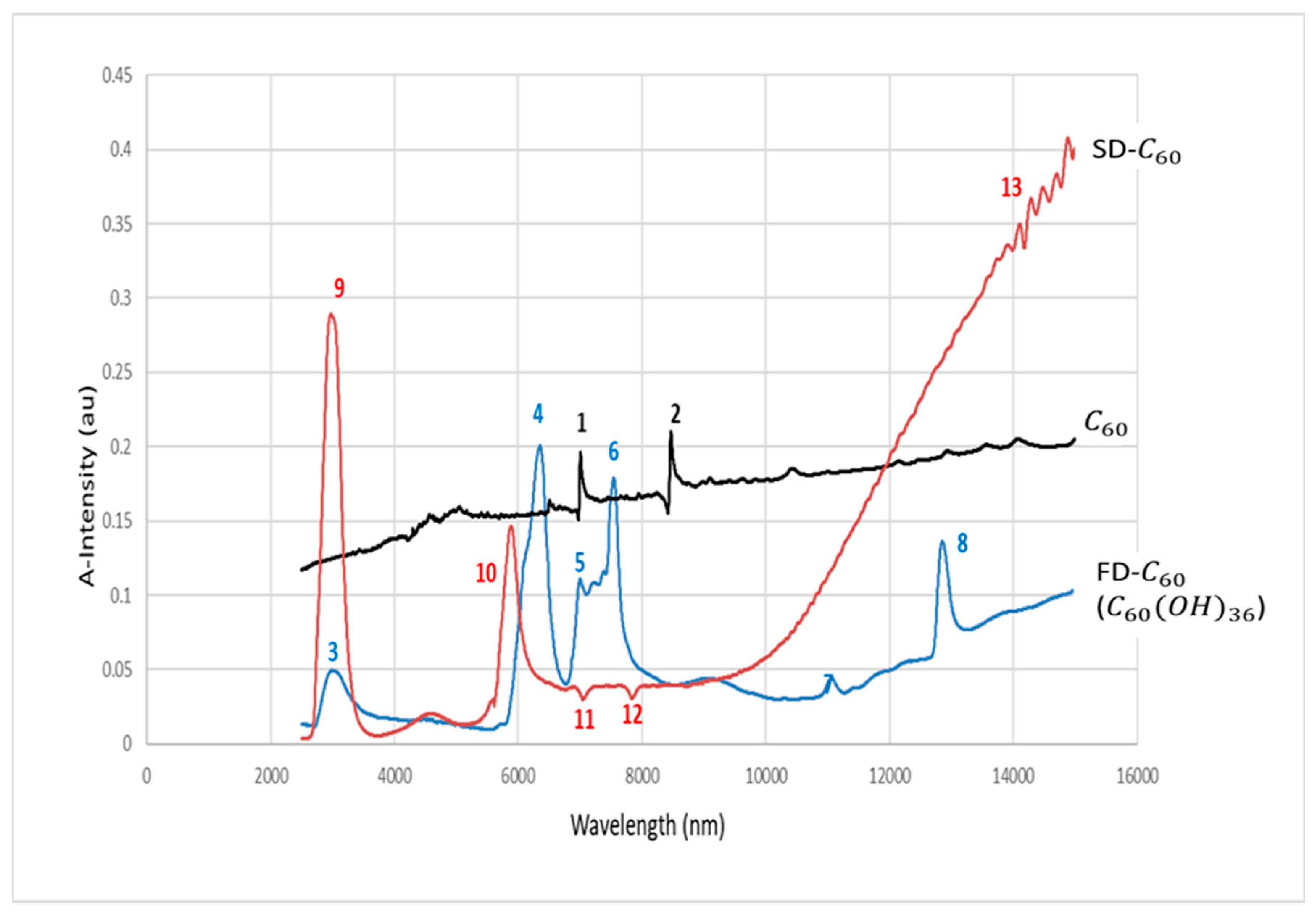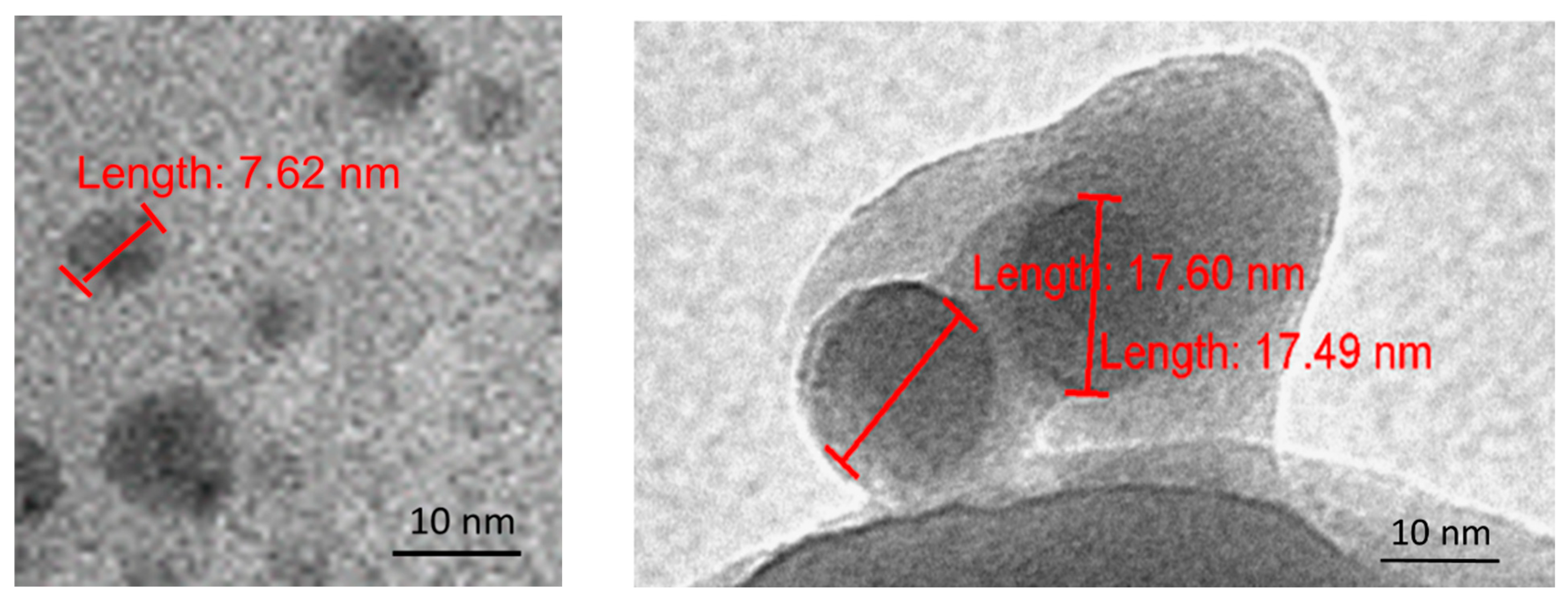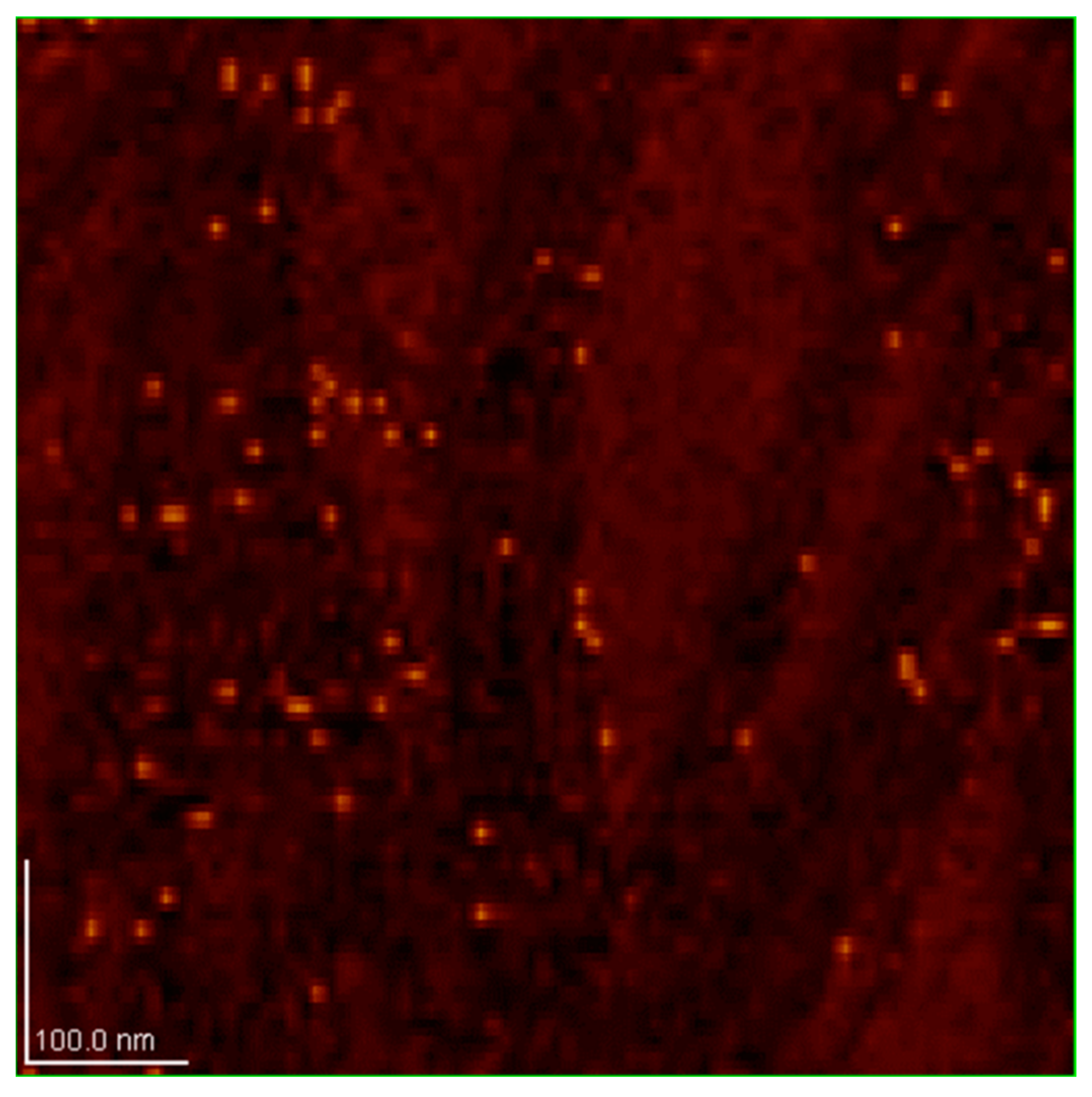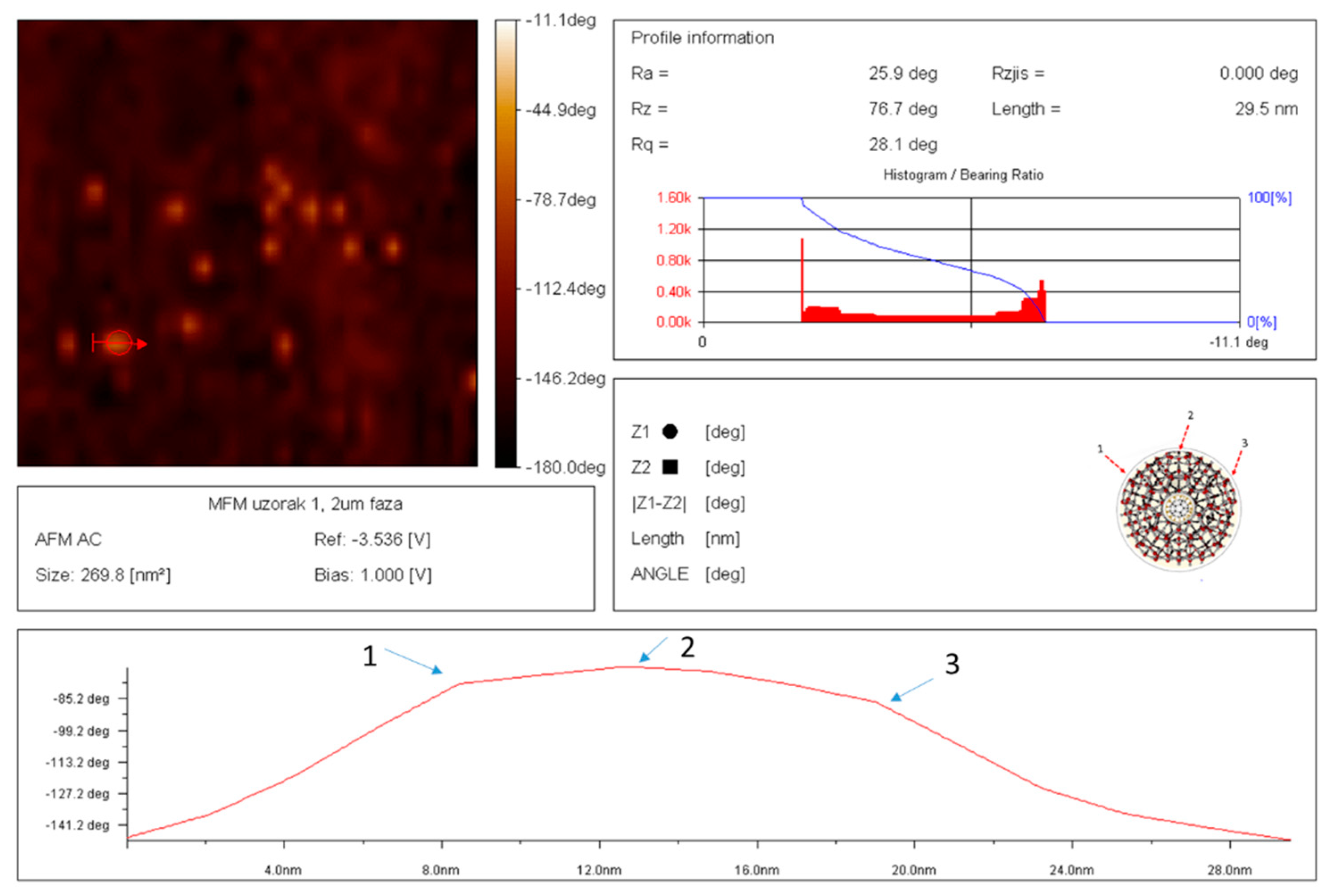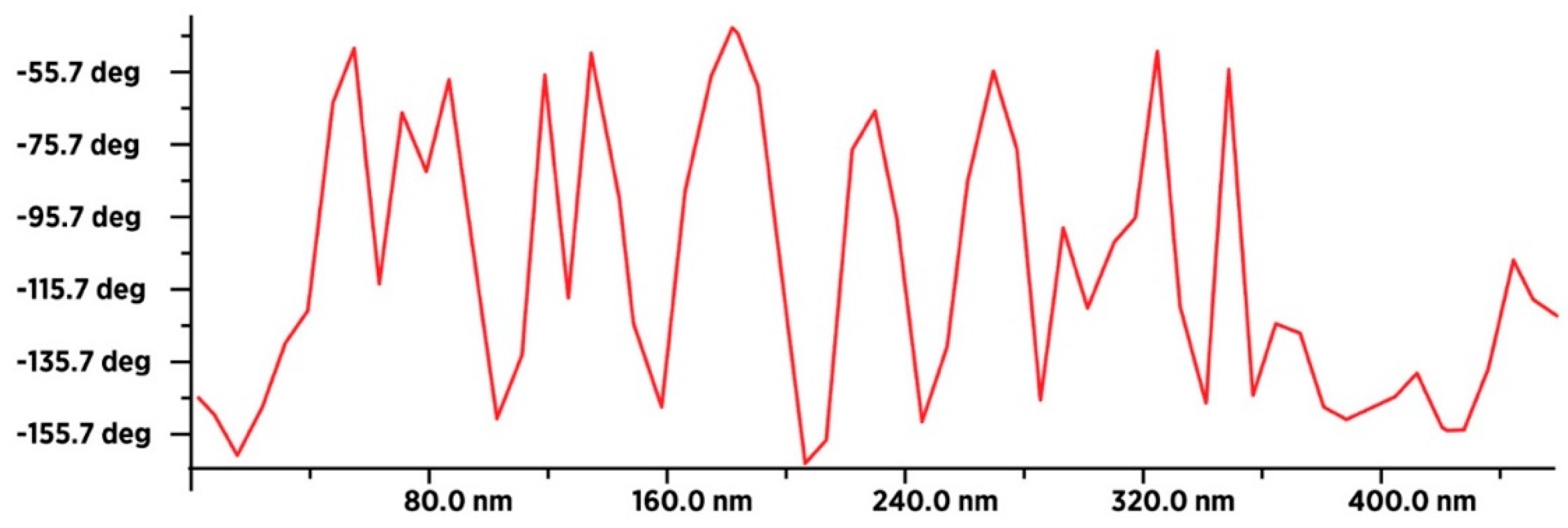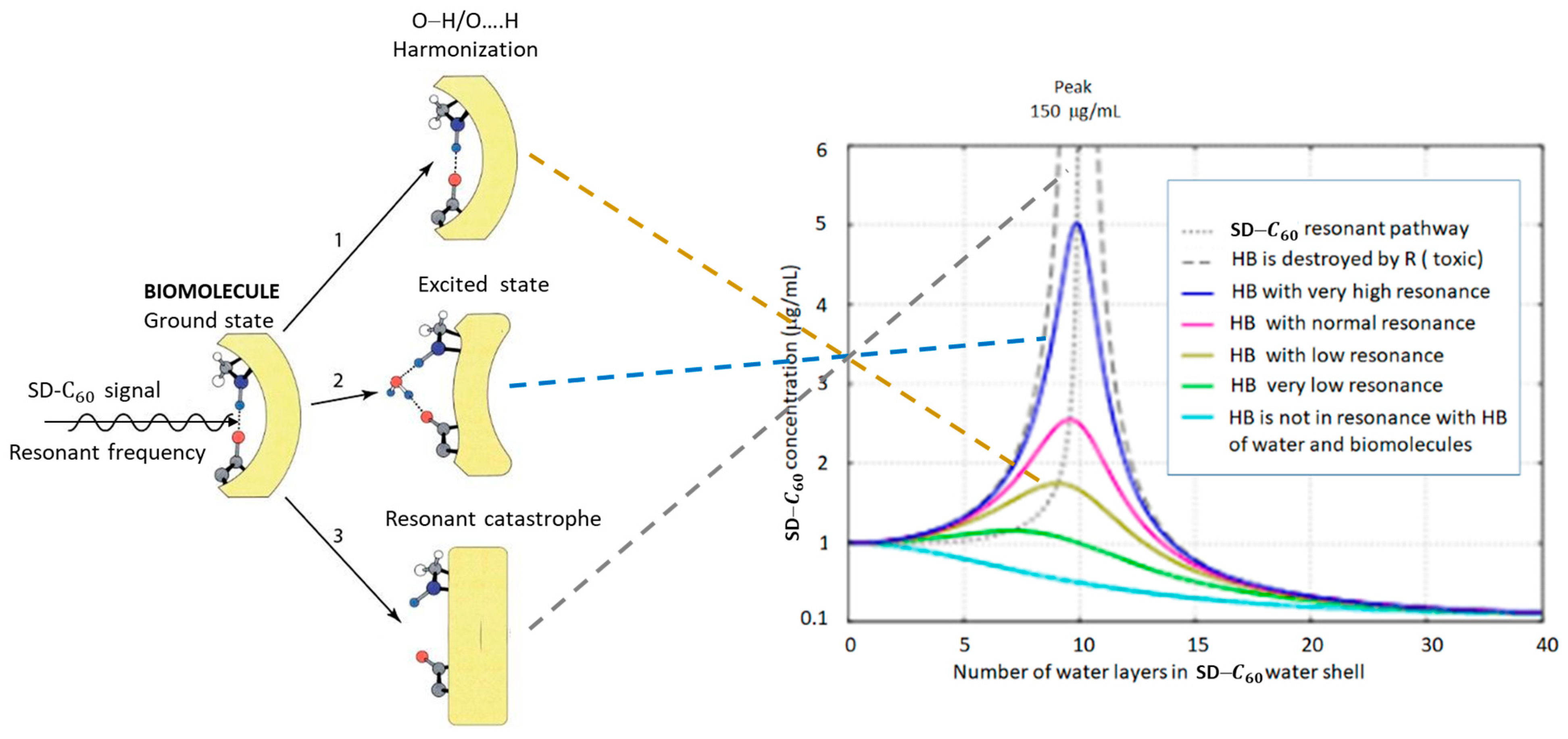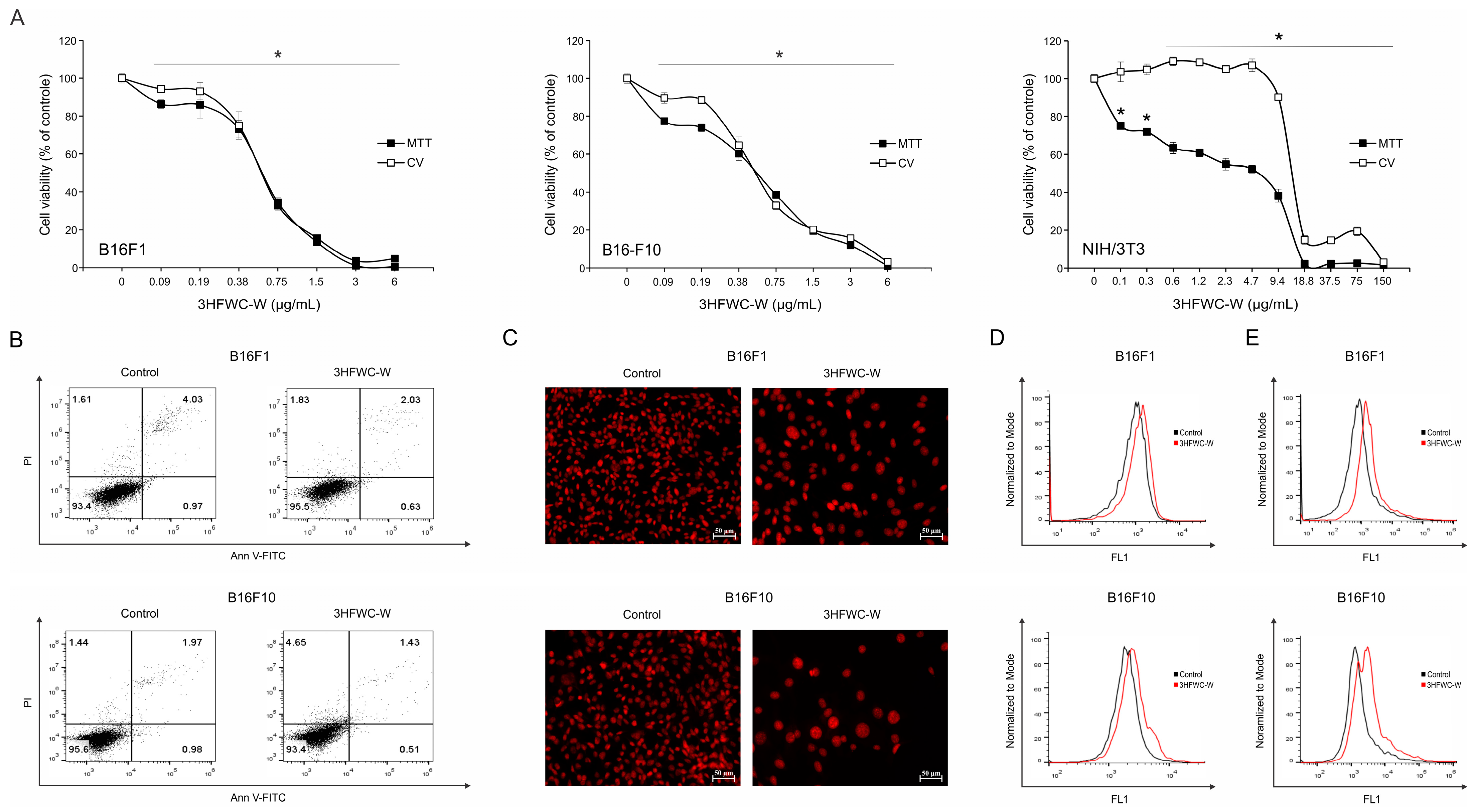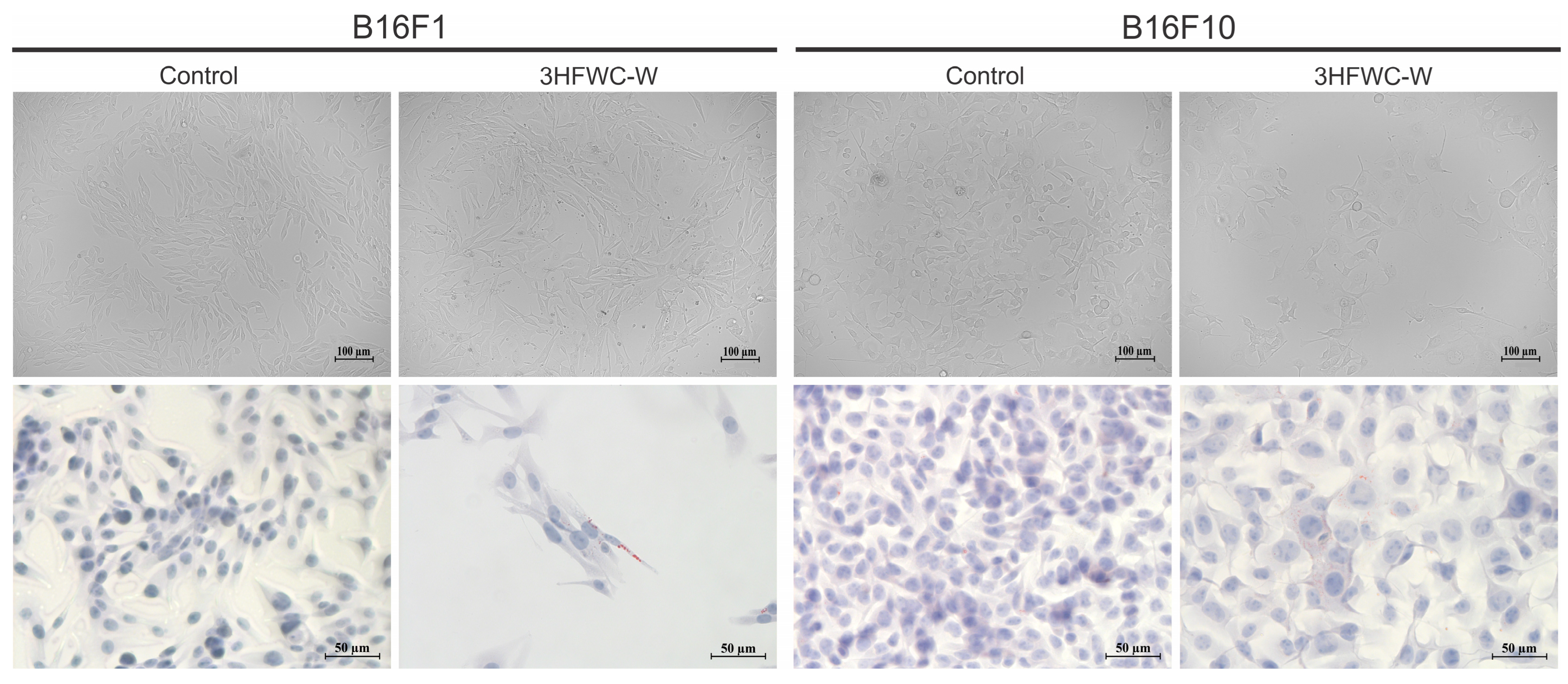1. Introduction
Water, compared with other natural polymolecular structures, has more than 35 “anomalies”. The term “anomaly” (under quotation marks) is used because compared with, for instance, 100 structures exhibiting one type of behavior, water behaves differently. One such example is that all materials contract in cold and expand in heat. Water behaves differently; liquid water has a greater density than ice, thus ice floats. Water expands at lower temperatures, and contracts at higher temperatures. Without this “anomaly”, biological forms of life probably would not exist. Water effected a breakthrough and created biological life, aided by external factors, primarily light, heat, and gravitation. Water within a cell makes up about 70% of the cell’s contents; the remaining contents are other chemicals, mostly proteins (15%). The organism as a whole contains approximately 72% water, the rest being dry matter. Lungs, blood, and the brain are most abundant with water. With ageing, the water percentage decreases in every organ, mostly within skin (from 70% to 60%). The interaction between water and biomolecules assists in molecular recognition, which makes water an active rather than a passive factor for biomolecular function [
1].
The water molecule is composed of two hydrogen atoms and one oxygen atom, connected by covalent hydrogen bonds. The strength of the covalent bond O-H is 460 kJ/mol (4.77 eV), while the strength of the noncovalent bond O…H ranges from 10 to 120 kJ/mol. (0.09–1.24 eV) depending on the pKw, temperature, and the organization of the water molecules: dimer, trimer—open chains, clusters, crystalline linear form (liquid crystals), self-similar quasicrystals or Penrose tiles [
2,
3,
4]. The organization of water molecules depends primarily on the angle between the hydrogen atoms covalently bound to oxygen in the water molecule. It was shown that both bond lengths and bond angels are related to icosahedral symmetry element Φ (
[
5]. Moreover, it was shown that the fine structure of matter, which was defined by Sommerfeld (
α = 2
π e2/
hc) = 0.007297…, where
e is the elementary charge,
h—Planck’s constant and
c—speed of light), can also be defined by Φ (α = Φ
2/(360 − 2/Φ) = 0.007297…, accuracy to six decimal places). Since the fine structure constant is considered a fundamental physical constant (inverse α
−1 = (360 − 2/Φ)/Φ
2 = 137.0359…), which quantifies the strength of the electromagnetic interaction between elementary charged particles, it indicates that there is a connection between the distribution of charges of valence electrons in molecules and distance proportion between atoms in molecules defined by Φ [
6].
Two water molecules (dimer) or more (trimer or longer water chains) engage in interactions via noncovalent hydrogen bonds. The basic reaction is 2H
2O ↔ [H
3O]
+ + [OH]
+, where K
w = [H
3O]
+ × [OH]
−, and pK
w = −log10K
w. The rate of water molecules’ interaction, primarily of noncovalent hydrogen bonds and of the reorganization of dipole moments, is within limits 1–100 ps at a nano scale. The microscopic dynamics and the conformation changes in biomolecules occur within microseconds (μs), while on the macroscopic level, (large clusters) can be in range from milli seconds (ms) to a few seconds (s). It was demonstrated that charge distribution (donor/acceptor) and the length of the hydrogen bond in water and biomolecules are determined by Φ [
7,
8]. This new evidence is in line with Felix Franks’ claim (1972) [
7,
8] that “…of all known liquids, water is probably the most studied and least understood”.
The organization of water molecules in chains, clusters, and multi-shells possesses an element of icosahedral symmetry (
= Φ = 1.61803…, with particular solutions of Φ, as a set of Fibonacci sequences: 3/2 =1.5, 5/3 = 1.66, 8/5 = 1.60, 13/8 = 1.625, 21/13 = 1.615, 34/21 = 1.619, 55/34 = 1.617, 89/55 = 1.618, 144/89 = 1.617……
Supplementary Figures S1 and S2, and Table S1). There is theoretical and experimental evidence that cold water may be organized as Penrose aperiodic tiles [
9]. Water organization in quasicrystal is possible because the angle between hydrogen atoms in molecules can be from 104°30′ (liquid) to 109°17′ (ice) and may have a possible particular solution of Φ. However, Penrose ideal tiles have anglea of 108° (
Figure 1a) and this is one of the reasons for icosahedral symmetry formation. On other hand, de Boissieu [
9] said that Penrose tiling is not completely reliable in representing quasicrystal in three-dimensional space. In spite of this observation, de Boissieu wrote that three-dimensional Penrose tiling (3DPT) can be generated by the six-dimensional cut method (
→
where
, rhombohedra with four edges perpendicular to a fixed face of the dodecahedron) and that such “parallel” components have been experimentally observed for the first time [
9]. However, icosahedral aperiodic tiling are well described as solid quasicrystal (alloys of three or more elements: Al, Mn, Fe, and Cr) by Dan Shechtman, who received the Nobel prize for chemistry in 2011 [
10,
11,
12]. Based on theoretical and experimental results, it is shown that soft-matter quasicrystals with icosahedral symmetry may exist in biological systems [
13]. There are huge differences in mechanical properties between solid quasicrystals and soft-matter quasicrystals. “For example, under action of impact tension with stress amplitude σ
0 = 5 MPa, the variation of mass density δ
ρ/
ρ0 is 10
−14 for solid quasicrystal, while under action of impact tension with stress amplitude σ
0 = 0.01 MPa, the variation of mass density δ
ρ/
ρ0 is 10
−3 for soft-matter quasicrystals” [
13]. In this paper, we experimentally demonstrated using TEM and AFM/MFM that a very stable soft quasi-crystalline water shells (dry state) around C
60(OH)
36, in a form of icosahedral 3-dimensional structure, exists. Water layers composed of elastic soft-matter quasicrystal (deformable, similar to peptide planes of proteins) can be obtained, using sets of nine or sixteen different Fibonacci numbers from its sequence, which determines the water icosahedral structure (different angles between hydrogen atoms of water molecule according to 3 × 3 and 4 × 4 Fibonacci determinants,
Supplementary Figure S6).
In order to stabilize the water layers’ icosahedral structure of a soft substance, water molecules have to be organized around a hard quasi-crystal that will generate icosahedral vibrations that will be resonantly transmitted to the water layers. This will amplify the vibration amplitudes depending on the number of layers and transmit them to the surrounding water and to the biomolecules. Of all the existing molecular crystals with icosahedral symmetry, the C60 molecule turned out to be the best candidate as a vibrational nano generator of icosahedral symmetry.
From a physics point of view, the C
60 is a spherical molecular crystal composed of 60 carbon atoms arranged in 12 pentagons and 20 hexagons. The C
60 possesses high symmetry with 120 symmetrical transformations (higher than diamond which has 48), having high speed rotation and “twisting” movement (a billion per second), and it possesses wave-particle duality (quantum/classical properties) [
14]. It also possesses self-harmonized attractive–repulsion forces through the vibration of carbon atoms of pentagons (diamagnetic) and hexagons (paramagnetic).
From a chemistry point of view, the C60 molecule has both advantages and disadvantages. The advantages are the existence of icosahedral symmetry (as some biomolecules and complex biological structures), the ability to be functionalized, as well as to form small or large molecules, that it can be a carrier of drugs, and it can be used as a marker in diagnostics. The disadvantages are that it is not soluble in water, it is reactive (double bonds of hexagons can be open), and can be toxic, which depends on its concentration.
In order to overcome some of the above mentioned disadvantages, the C
60 molecule is funcionalized with OH groups (the first C
60 derivative, FD-C
60). Fullerene hydroxylation (FD-C
60) increases water solubility and affects these nano particles’ interactions with biological systems. It is demonstrated that increasing fullerene water solubility through C
60 surface modification leads to significantly decreased toxicity [
15]. Specifically, in this study, the decreased toxicity of FD-C
60 compared with cytotoxic effect of fullerene aggregates to human skin (HDP) and liver carcinoma (HepG2) cells was observed [
15]. Similarly, it was observed that hydroxylation decreases the toxic potential of fullerene on mouse L929 fibrosarcoma, rat C6 glioma, and U251 human glioma cell lines [
16]. Additionally, FD-C
60 induced apoptotic changes on investigated cells lines, while fullerene C
60 induced necrotic cell death [
16]. The distinct effects of pristine and modified fullerene originate from the different nanoparticles’ interaction with the intracellular metabolic pathways [
16,
17].
However, FD-C
60 did not provide the satisfactory absence of toxicity in living systems [
15]. In order to reduce toxicity and even completely eliminate it, as well as to improve the transfer of vibrational signals of C
60 molecules to biological water and biomolecules, the second derivative of the C
60 molecule, SD-C
60 (commercial name: 3HFWC—hyperharmonized hydroxylated fullerene water complex) was designed and made by creating water layers (shells) around FD-C
60 (fullerol). The size of SD-C
60 (3HFWC) varies from 3 to 30 nm, depending on the number of water layers [
18,
19].
Bearing in mind that, biochemically, FD-C60 showed beneficial effects in the treatment of cancer, the design and synthesis of SD-C60 was achieved, which reduced or even completely eliminated the toxicity of the original molecule (FD-C60). Since interactions with biomolecules are based on a biophysical approach, this will produce different effects to a biochemical approach.
Our goal is to develop a method that will reprogram malignant cells, rather than causing tumor cell death which might have serious consequences like triggering compensatory proliferation and tumor repopulation upon applied treatment in advanced tumor stages.
2. Materials and Methods
2.1. Water
Tap water, from Belgrade’s city water supply system, was used (Ca2+—71.1 mg/L, Mg2+—14.7 mg/L, Na+—11.4 mg/L, K+—1.0 mg/L, Fe2+/3+—0.05 mg/L, NH4+—0.03 mg/L, Cl−—14.1 mg/L and NO3−—6.1 mg/L), at a conductivity 85 mS/cm. Then, water was treated using reverse osmose (Ca2+—0.60 mg/L, Mg2+—0.53 mg/L, Na+—0.32 mg/L, K+—0.04 mg/L, Fe2+/3+—<0.005 mg/L, NH4+—<0.03, Cl−—0.18 mg/L and NO3−—0.12 mg/L), at a conductivity in the tank of 0.05 mS/cm, and it was used for production SD-C60.
It is well known that under normal conditions, free water is organized into dimers, trimers, tetramers, and slightly more complex water structures with lifetimes from 50 fs to 100 ps. However, in a limited space at the nano and micro level, water can be organized into water chains according to the laws in the elements of icosahedral symmetry (
Supplementary Table S1), because the values 3/2, 5/3, 8/5, 13/8 … respectively, are 1.500, 1.666, 1.600, and 1.625, which “oscillatory” converge to the value Φ = 1.618… (
Supplementary Figure S2), i.e., to the element of icosahedral symmetry
with eigenvalues T
1g and T
2g (
Supplementary Table S1).
2.2. Manufacturing of SD-C60
The FD-C
60 (fullerol, purity 99.5%) was ordered from Solaris, Edmonton, AB, Canada, while SD-C
60 was synthesized at two laboratories the NanoWorld, Belgrade and the TFT Nano Center, Belgrade. Before mixing with water, fullerol was pre-treated with UVC sterilizer. Ultra-pure water was obtained by purifying water from a water supply system through the reverse osmosis process. Certain amounts of 0.150 g fullerol was mixed with 1 L ultra-pure water for initial experiment (NanoWorld lab, Belgrade, Serbia) and 3 g fullerol (TFT NanoCenter, Belgrade, Serbia) was mixed with 20 L of ultra-pure water for commercial use. This mixture passed through the process of steering and was heated at 38 °C for 40 min and then pumped into magnetic vessels by filtration through the membrane filter of 220 nm. Under external action of +250/−92 mT oscillatory magnetic field, according to eigenvalues of icosahedral symmetry T1g, T1u, T2g, and T2u, which for symmetry elements C
5,
, S
10, and
gave solutions ±½(1 +
) and ±½(1 −
) (
Supplementary Table S1). Under the internal action of the vibrations of the C
60 molecules and the vibrations induced by the external magnetic field according to the same law (principle: “between a rock and a hard place”) at 37 °C in the reactor, water layers (shells) were formed around fullerol. Depending on the production conditions, two basic types of SD-C
60 can be synthesized: a light-yellow solution (with a small presence of free fullerol in the solution) and white (without free fullerol in solution), with different numbers of water layers.
2.3. UV-VIS-NIR
Water, FD-C60 (fullerol) and SD-C60 (3HFWC, both yellow and white), is characterized using a Lambda 500 spectrometer, Perkin-Elmer, Waltham, MA, USA (the NanoLab, Faculty of Mechanical Engineering, University of Belgrade) in the range of 250–3000 nm.
2.4. FTIR
Water, FD-C60 (fullerol) and SD-C60 (3HFWC, both yellow and white), is characterized using the Spectrum Spotlight 400 FTIR Imaging System, Perkin-Elmer, USA (the NanoLab, Faculty of Mechanical Engineering, University of Belgrade) in the range of 2500–14,000 nm.
2.5. TEM
The samples in liquid state were applied to the copper mash coated with carbon. After draying the samples, we analyzed and recorded on the CM12 Philips/FEI Transmission Electron Microscopy, Eindhoven, The Netherlands, magnification ×45,000 and ×60,000, installed at the Faculty of Biology, University of Belgrade (the sample was prepared 6 months ago) and on TEM, JEM 1400, JEOL, Tokyo, Japan, magnification ×120,000 up to ×200,000, installed at the Faculty of Agriculture, University of Belgrade (one prepared 8 months ago, the other 3 years ago).
2.6. AFM/MFM
The materials in liquid state, FD-C60 (fullerol) and SD-C60 (3HFWC), each in bottles of 100 mL, were prepared in TFT Nano Center, Belgrade. The concentration of fullerol in the first derivative of C60 was 0.15 mg/mL, and in 3HFWC, it was also 0.15 mg/mL of fullerol (as a precursor), around which water layers were formed. The color of fullerol in solution was light brown, and 3HFWC samples in solution were very light-yellow to white.
Solutions of 2 mL of each were applied to diamagnetic foils in each of the 5 samples. First, the sample was dried with SD-C60 (3HFWC) with a gradual increase in temperature, from 25 to 110 °C over the next two hours. During the drying time, a visual control was performed every 15 min and the temperature was measured. After two hours, samples with dry and SD-C60 (3HFWC) was removed and samples with fullerol were placed to dry. The procedure was repeated as in the previous case.
After drying, the samples with SD-C60 (3HFWC) had two characteristic areas: one was white–grayish (transparent scrum) and the other was medium brown, while the fullerol samples were dark brown. After drying, the samples were stored in dark closed containers and kept at room temperature until use.
Characterization of dry samples was performed using JSPM-5200, Scanning Probe Microscopy, JEOL, Japan, (installed at the NanoLab, Faculty of Mechanical Engineering, University of Belgrade). Two methods were used: (1) AFM (Atomic Force Microscopy), and (2) MFM (Magnetic Force Microscopy). Both techniques are non-invasive. AFM method is based on Van der Waal’s forces and London-type dispersive forces between tip and sample, while MFM, in the non-contact imaging mode, is based on magnetic dipole–dipole interaction between tip and sample (measuring ± deflection of tip “ϕ” in deg.). For the purpose of magnetic gradient investigation, specialized cantilevers, type HQ NSC18/Co-Cr Al BS (MikroMasch, Tallinn, Estonia), with force constants in the range between 1.2 and 5.5 N/m and with the resonant frequency range between 60 and 90 kHz, were used. Prior to experiments, the cantilevers were placed in the external magnetic field of 0.4 T in order to induce a magnetic field themselves. Scanning size of sample depended on the object size and its number, which were of interest. Bearing in mind that a fullerol is 1.2 nm in size (as single molecule) and could be up to 2–3 nm (as aggregates), the optimal scan size is between 30 nm and 100 nm. Expected size of SD-C60 (3HFWC), based on theory and initial experiment by TEM, is between 5 nm and 30 nm, so the optimal scan size should be between 100 nm and 300 nm.
2.7. Biological Study In Vitro
Materials: Culture media DMEM (Dulbecco′s Modified Eagle′s Medium) and RPMI-1640 (Roswell Park Memorial Institute-1640) supplemented with 20 mM HEPES, 2 nM L-glutamine, and 0.01% sodium pyruvate were bought from Capricorn Scientific GmbH (Ebsdorfergrund, Germany). Penicillin/Streptomycin solution was from Biological Industries (Cromwell, CT, USA). Fetal bovine serum (FBS), phosphate-buffered saline (PBS), dimethyl sulfoxide (DMSO), trypsin, crystal violet (CV), propidium iodide (PI), and carboxyfluorescein diacetate succinimidyl ester (CFSE), were obtained from Sigma-Aldrich (St. Louis, MO, USA). 3-(4,5-dimethythiazol-2-yl)-2,5-diphenyltetrazolium bromide (MTT) was from AppliChem (St. Louis, MO, USA). Paraformaldehyde (PFA) was purchased from Serva (Heidelberg, Germany). Annexin V-FITC (AnnV-FITC) was bought from BD Pharmingen (San Diego, CA, USA), Apostat was from R&D Systems (Minneapolis, MN, USA), and acridine orange (AO) was obtained from LaboModerne (Paris, France).
The tested substance SD-C
60 (3HFWC-W) [
19] was obtained from TFT Nano Center (Belgrade, Serbia). The initial concentration of the substance was 0.15 g/L, while the working solutions for in vitro treatment were made in a culture medium, immediately before use. According to the manufacturer’s instructions, the substance was stored at room temperature (RT), and protected from light due to photosensitivity, while the working solutions were made far from light sources.
This research was performed on two melanoma cell lines of murine origin and different level of aggressiveness—B16F1 and B16F10, and a mouse embryonic fibroblast cell line—NIH/3T3. Cell lines are commercially available and originate from the American Type Culture Collection (ATCC). Both melanoma cell lines were kept in HEPES-buffered RPMI-1640 medium supplemented with 10% heat-inactivated FBS, 2 mM L-glutamine, 0.01% sodium pyruvate, penicillin (100 units/mL), and streptomycin (100 μg/mL). Cells were grown at 37 °C in a humidified atmosphere with 5% CO2. Mouse embryonic fibroblast cells were kept in the same conditions in the DMEM medium.
2.8. Methods
2.8.1. Viability Tests
For viability determination, B16F1, B16F10, and NIH/3T3 cells were seeded at 1 × 10
4, 8 × 10
3, and 1 × 10
4 cells/well density in 96-well plates, respectively. After 24 h, all tested cells were incubated at 37 °C in the absence or presence of a wide range of concentrations (0.09–6 µg/mL (for B16F1 and B16F10) and 0.1–150 µg/mL (for NIH/3T3)) of experimental substance 3HFWC-W for 24 h. At the end of the incubation time, two different cell viability tests were performed. The MTT assay is a colorimetric test based on the ability of cells to reduce the tetrazolium salt to formazan, a purple precipitate whose amount correlates with the number of living cells [
20]. Crystal violet assay is a colorimetric test based on the binding of the base dye crystal violet to all negatively charged polysaccharides, proteins, and nucleic acids, where the amount of bound dye correlates with the number of viable cells [
21]. Namely, at the end of the treatment, the supernatants were discarded. For the MTT test, cells were incubated at 37 °C with MTT solution (0.5 mg/mL) for approximately half an hour until purple formazan crystals were formed. Afterwards, the produced formazan was dissolved in DMSO. For the CV test, after supernatant disposal, cells were fixed with 4% PFA for 10 min at RT and then stained with 0.02% CV solution for 15 min. After washing with tap water, the dye was dissolved in 33% acetic acid. The intensity of dissolved color in both tests was evaluated by measuring the absorbance with an automated microplate reader at 540/670 nm. The viability of treated cells is represented as a percentage of the absorbance value of the control culture grown in the medium, which was arbitrarily assigned a viability value of 100%. The IC
50 values were calculated using a four-parameter logistic function and presented as the mean ± standard deviation (SD) of three independently performed experiments.
2.8.2. Flow Cytometry
Flow cytometry (Fluorescence Activated Cell Sorting, FACS) is a fast and reliable method with high sensitivity for the detection of discrete subpopulations of cells in large samples, which is based on fluorescent labeling of cells and measurement of fluorescence intensity [
22]. For flow cytometry analysis, B16F1 and B16F10 cells were seeded at 3 × 10
5 and 2 × 10
5 cells/well density in 6-well plates, respectively. After 24 h, cells were incubated at 37 °C in the absence or presence of the IC
50 value of experimental substance 3HFWC-W for 24 h. The measurement of the fluorescence intensity of labeled cell samples was performed using a CyFlow
® Space flow cytometer (Partec GmbH, Münster, Germany) and a CytoFLEX
® flow cytometer (Beckman Coulter, Pasadena, CA, USA), and the analysis of the obtained results was performed using the FlowJo
TM software program (
https://www.flowjo.com/, accessed on 17 November 2023).
For the detection of type I programmed cell death, double staining of cells with fluorescently labeled recombinant annexin V (Ann V-FITC) and propidium iodide (PI) was performed, which enabled the detection of populations of early-apoptotic (AnnV
+/PI
−) and late-apoptotic/necrotic (AnnV
+/PI
+) cells [
23]. After the treatment, cells labeled with Ann V-FITC and PI, according to the manufacturer’s instructions, were incubated for 15 min at RT in the dark. The staining reaction was stopped by adding Annexin V Binding Buffer.
FITC-conjugated pan-caspase inhibitor (ApoStat), which can passively diffuse through the cell membrane and irreversibly bind to activated forms of these enzymes, was used to identify and quantify total caspase activity in cells [
24]. At the end of the treatment time, the cells were labeled with Apostat according to the manufacturer’s instructions and incubated at 37 °C for 30 min.
To detect the process of autophagy, acridine orange (AO) dye was used, which binds with high affinity to acidic vesicles-autophagosomes, the characteristic markers of autophagy [
25]. Upon the completion of the treatment, cells were stained with a solution of 10 μM AO for 15 min at 37 °C.
Carboxyfluorescein diacetate N-succinimidyl ester (CFSE) was used to determine the influence of the tested substance on the proliferative potential of cells. This dye diffuses passively into the cell and binds covalently to the intracellular molecules. With each division, the fluorescence intensity in the daughter cells becomes twice as weak, which is suitable for monitoring the rate of cell proliferation [
26]. Melanoma cells were stained with 1 µM CFSE for 10 min at 37 °C before the seeding and the treatment with 3HFWC-W. At the end of the treatment period, the intensity of green fluorescence was measured.
The production level of reactive oxygen species (ROS) and reactive nitrogen species (RNS) was determined using the redox-sensitive dye dihydrorhodamine 123 (DHR 123), a non-fluorescent dye that freely diffuses into the cell and in the presence of ROS/RNS, oxidizes to fluorescent rhodamine 123. In this way, the total production of ROS/RNS (predominantly peroxynitrite and hydrogen peroxide) in the cells during the treatment is detected [
27]. Melanoma cells were incubated for 20 min at 37 °C in a 1 µM solution of DHR 123 dye before the seeding and the treatment with 3HFWC-W. Following the end of the treatment period, the intensity of green fluorescence was measured.
Dihydroethidium (DHE) emits blue fluorescence in the cytosol where it can be oxidized in the presence of superoxide anion into ethidium, which then intercalates in DNA, emitting red fluorescence. By measuring the intensity of fluorescence on a flow cytofluorimeter, it is possible to determine the level of superoxide anion production in cells [
27]. At the end of the treatment period, cells were stained with 20 µM DHE for 30–45 min at RT, in the dark.
2.8.3. Microscopy
To detect and identify morphological and intracellular changes at the microscopic level, B16F1 and B16F10 cells were seeded at 5 × 104 and 3.5 × 104 cells/well density in 8-well chamber slides, respectively. After 24 h, cells were incubated at 37 °C in the absence or presence of the IC50 value of experimental substance 3HFWC-W for 24 h.
For cell morphology analysis at the level of light microscopy, seeded and treated cells were observed without prior staining and digitally photographed on a ZOE Fluorescent Cell Imager (Bio-Rad Laboratories, Hercules, CA, USA). Alternatively, cells were stained with Oil Red O, a diazo dye used for staining and detection of lipid droplets, as well as lipofuscin granules. The staining was performed according to the manufacturer’s instructions using a commercially available kit (Bio Optica, Milano, Italy). After the 24 h treatment, the cells were washed with PBS and fixed in 4% PFA for 15 min at RT. The cells were then washed with distilled water and stained with Oil Red O solution for 20 min at RT. Contrast staining was performed with hematoxylin for 30 s, after which the plate was washed with running water for 3 min. Cells were mounted in a water-based mounting medium (BioMont Aqua, Biognost, Zagreb, Croatia). The microscopic preparation was observed on a Zeiss AxioObserver Z1 inverted fluorescence microscope (Carl Zeiss AG, Oberkochen, Germany) and photographed at 200× magnification.
Cell labeling with propidium iodide dye was used for the detection of morphological features of apoptosis at the level of fluorescence microscopy. Propidium iodide is a fluorescent intercalating dye that binds to the DNA molecule in cells, allowing visualization of the shape of the cell nuclei using fluorescence microscopy [
28]. After the 24 h treatment, the cells were washed with PBS and fixed in 4% PFA for 15 min at RT. Staining was performed with PI solution (0.1% Triton X-100, 0.5 M EDTA pH 8, 50 µg/mL RNase, and 50 µg/mL PI—final concentrations in PBS) for 1–2 min at RT. After washing in PBS, cells were mounted in a fluorescence microscopy medium (Fluoromount-G™, eBioscience, San Diego, CA, USA) and analyzed on a ZeissAxio Observer Z1 inverted fluorescence microscope (Carl Zeiss AG, Oberkochen, Germany) at 200× magnification.
2.8.4. Statistical Analysis
The data are presented as the means ± SD of at least three independently performed experiments. To calculate the statistical significance of the difference between the obtained results, an analysis of variance (ANOVA) was used, followed by the Student t-test for multiple comparisons. A value of p < 0.05 was considered statistically significant.
4. Conclusions
A Penrose rhombic tiling, based on Φ (icosahedral symmetry), has two characteristic angles between hydrogen atoms in a water molecule; 108° and 72° (hydrogen covalently connected to oxygen and non-covalent connected, respectively). An angle of 108° is also an angle of pentagonal water order. In this paper, it was found that there are nine or sixteen types of stable particular solutions of Φ ({9,16}Φ) and that they synergistically fit the 3DPT (three-dimensional icosahedral Penrose tilings) much better than only one type of rhombic tiling with a 108° angle.
On the basis of 3DPT{9,16}Φ, the water icosahedral structure around the first derivative of C60 molecules (FD-C60) and thus the second derivative of the C60 (SD-C60), are explained. Water layers in SD-C60 were experimentally identified in solution (NIR and FTIR spectroscopy) and in a dry state in the form of soft-matter (TEM and AFM/MFM).
Two forms of SD-C60 with different numbers of water (shells) layers: from one to five (SD-C60-Y, commercial name 3HFWC) sizes up to 10 nm, and from six to nine (SD-C60-W, commercial name 3HFWC-W) with sizes 10–30 nm, were synthesized and characterized using UV-Vis-NIR spectroscopy. Their difference in color, number of water layers, and effects on biological structures were shown.
The existence of water layers, for the concentration of SD-C60 in the range from 1 to 10 mg/mL, eliminated toxicity, extended viability, and improved the effects on biological water and biomolecules (with hydrogen bonds; proteins, DNA, etc.).
The obtained results show that the main mechanism emphasizing the suppression of melanoma cell growth in vitro was the same for SD-C60-Y (3HFWC) and SD-C60-W. Upgraded formula of 3HFWC-3HFWC-W demonstrated greater potential to diminish cell growth in comparison with the previously tested one, while the induction of senescence might be considered a more desirable mechanism of antitumor action than conventional nonselective chemotherapy in advanced melanoma treatment.
Bearing in mind the beneficial effects of SD-C
60 on murine cell lines, presented in this paper, as well as previously demonstrated effects on melanoma models in vitro and in vivo [
40,
41], it can be speculated that nano SD-C
60 substances can open a new era for the treatment of different pathologies, called “water-based nanomedicine”.


